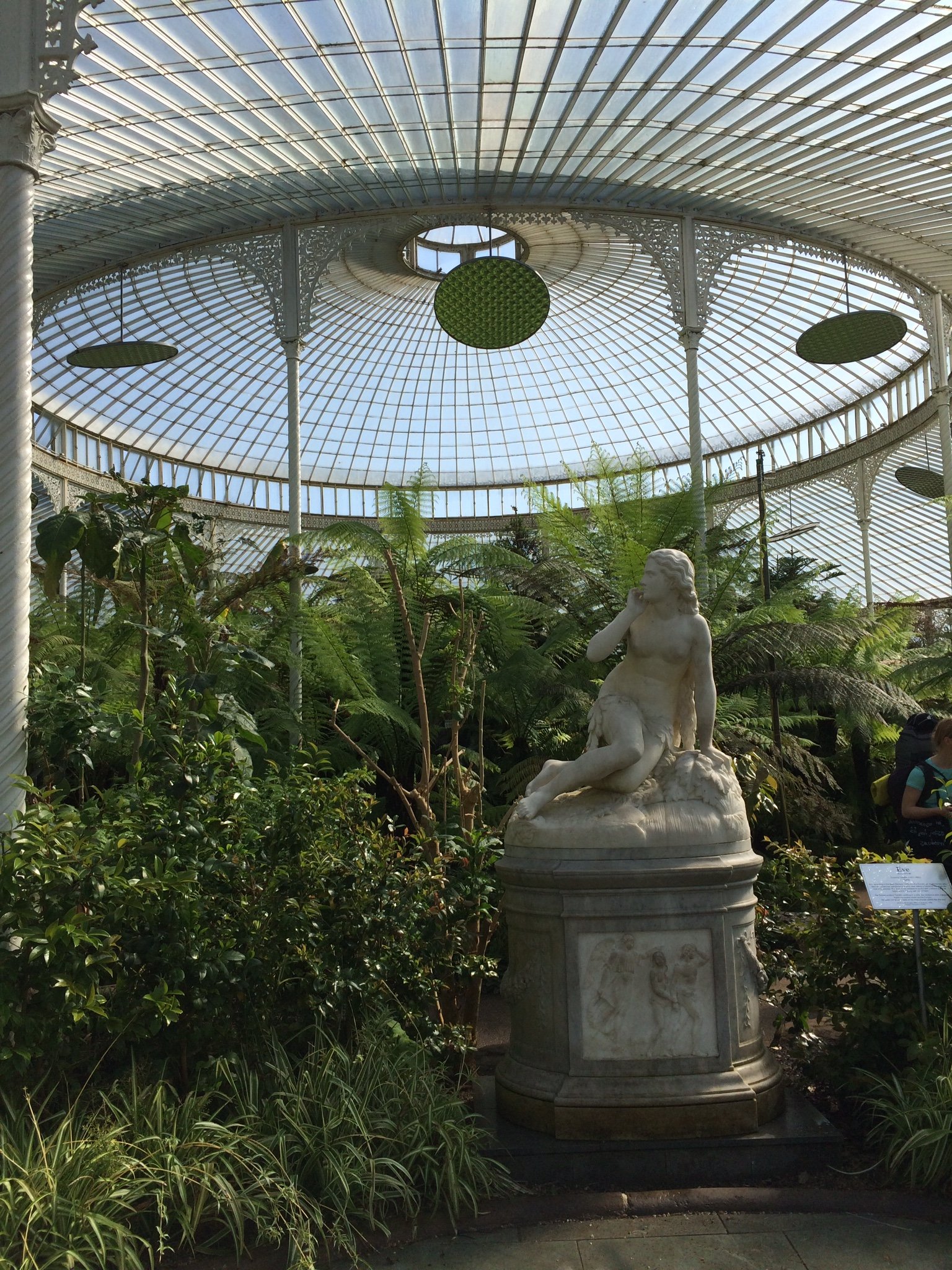The 19th century was a transformative period for British horticulture, marked by a surge in glasshouse, or greenhouse, construction and technological innovation. Against the backdrop of industrialization and urbanization, glasshouses emerged as symbols of agricultural progress and Victorian ingenuity.
Glasgow Botanical Gardens, photo by Kate Castle
The Victorian era was characterized by a fervent fascination with nature and a desire to tame and cultivate it within the confines of grand estates and urban parks. Glasshouses became focal points of Victorian gardens, serving as showcases for exotic plants imported from around the globe. These structures were not merely utilitarian; they were architectural marvels adorned with ornate ironwork, intricate glass panels, and elaborate heating systems. The Victorians saw glasshouses not only as places of cultivation but also as symbols of wealth, refinement, and scientific advancement.
One of the most iconic symbols of 19th-century British glasshouses was the Crystal Palace, erected in London's Hyde Park for the Great Exhibition of 1851. Designed by Joseph Paxton, the Crystal Palace was a triumph of engineering and architectural innovation. Its vast dimensions, expansive glass panels, and innovative use of iron and wood captivated the public imagination and inspired a new wave of glasshouse construction across the country. The Crystal Palace showcased the potential of glasshouses as spaces for horticultural display, scientific experimentation, and public education.
The 19th century witnessed significant advancements in glasshouse technology, driven by a combination of scientific inquiry and industrial innovation. Improved methods of glass production, such as the invention of rolled plate glass and the mass production of glass panes, made glasshouses more affordable and accessible to a wider audience. Innovations in heating, ventilation, and irrigation systems allowed growers to create controlled environments conducive to the cultivation of a wide range of plants, including exotic fruits, flowers, and ornamentals.
Glasshouses in the 19th century played a crucial role in the commercialization of horticulture, enabling growers to cultivate high-value crops for urban markets. Specialization became increasingly common, with growers focusing on specific crops such as grapes, pineapples, and orchids. The introduction of new techniques such as forcing and espaliering allowed growers to produce crops out of season, extending the availability of fresh produce and catering to the demands of affluent consumers.
Glasgow Botanical Gardens, photo by Kate Castle
The proliferation of glasshouses in 19th-century Britain had profound social and cultural implications. Glasshouses became symbols of Victorian progress and prosperity, reflecting the era's preoccupation with industry, commerce, and empire. They also played a role in shaping Victorian attitudes towards nature, encouraging a sense of mastery and control over the natural world. Glasshouse cultivation became a popular leisure activity for the middle and upper classes, with visits to botanical gardens and hothouses considered fashionable pursuits.
The 19th century was a golden age of British glasshouses, marked by innovation, experimentation, and commercialization in horticulture. These structures, ranging from elaborate conservatories to utilitarian hothouses, played a pivotal role in shaping Victorian landscapes and attitudes towards nature. As symbols of wealth, refinement, and scientific progress, 19th-century British glasshouses left an indelible mark on the cultural and agricultural heritage of the nation, paving the way for further advancements in controlled-environment agriculture in the centuries to come.
“When I traveled Scotland, one of my favorite parts was visiting the Glasgow Botanical Gardens. They’re so beautiful, it was like heaven on earth!”


